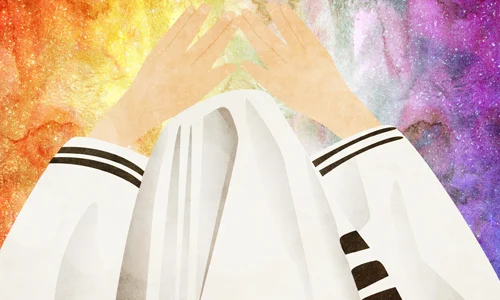
The Eternal Words of Torah
The name of the Parshah is Vayelech.
This Parsha recounts the events of Moshe’s last day of earthly life. He transfers the leadership to Yehoshua, and writes the Torah in a scroll which he entrusts to the Levi’im.
The mitzvah of hakhel is given: every seven years, during the festival of Sukkot, the entire Jewish people should gather at the Beit Hamikdash in Yerushalayim, where the king should read to them from the Torah.
Vayelech concludes with the prediction that the Jewish people will turn away from Hashem, causing Him to hide His face from them, but also with the promise that the words of the Torah shall never be forgotten.

Yom Kippur: A Day Like No Other
Wednesday night and Thursday is the holiest day of the entire Jewish calendar, Yom Kippur. This is the day of atonement when Hashem seals the book of our fate. On Yom Kippur, we do not eat or drink, we do not wash any parts of our bodies, put on ointments, wear leather shoes or engage in marital relations. This is a day of divine mercy and we spend it in Shul praying and beseeching Hashem to forgive us as our father and to grant us a good year.

Shabbat Shuvah: Returning Together
The Shabbat between Rosh Hashana and Yom Kippur is called Shabbat Shuvah, Shabbat of Return because its special haftarah reading begins with the words Shuvah Yisrael "Return O Israel.” It is also referred to as Shabbat Teshuvah because it falls during the Ten Days of Repentance between Rosh Hashana and Kippur.
The Shabbat was given to the Jewish people as a time for Torah study and prayer, and, although one should always take care not to pass the time idly or in inappropriate conversation, on Shabbat Shuvah one should be especially careful to concentrate entirely on Torah, prayer, and reflection on repentance, thereby attaining forgiveness for whatever unfitting behavior may have marred other Shabbats.

When All Become Kohanim Gedolim
Yom Kippur is the only day of the year that the Kohen Gadol would enter the Kodesh Hakodashim (the holiest room in the Beit Hamikdash).
When Moshiach comes, all Jews will be on the level of the Kohen Gadol and will be able to enter the Kodesh Kadashim at any time. This idea is based on the Baal Haturim who explains that at Matan Torah, all Jews were on the level of Kohanim Gedolim. This lofty state will return in the time of Geulah.

Higher Than Heaven
It was the night of Yom Kippur, the holiest time of the year.
As all the Jews were gathering in shul anxiously awaiting their rebbe’s arrival to begin the prayer services, Rabbi Shneur Zalman, also known as the Alter Rebbe, mysteriously left the small European village.
Some of his devoted and admiring chassidim speculated that their beloved leader went to heaven, connecting to G‑d and His angels in the heavenly spheres in preparation for this holy time.
Where was their beloved leader?
As the Rebbe’s chassidim waited worriedly for him to arrive, he was climbing deep into the woods, with a sack on his back, to chop down wood.
They later learned that he then proceeded to bring the firewood and the sack into the lonely little house of an impoverished widow who had just given birth and her five small children. Saving a life is so important, that chopping wood and creating fire—normally forbidden on the holy day—are permitted.
No task was beneath this great Torah scholar as he created a blazing fire in the fireplace, unpacked the food and clothes from the sack, lovingly fed the children and left the woman with many kind and caring words.
Perhaps we could say that the Alter Rebbe went to a place even higher than heaven.